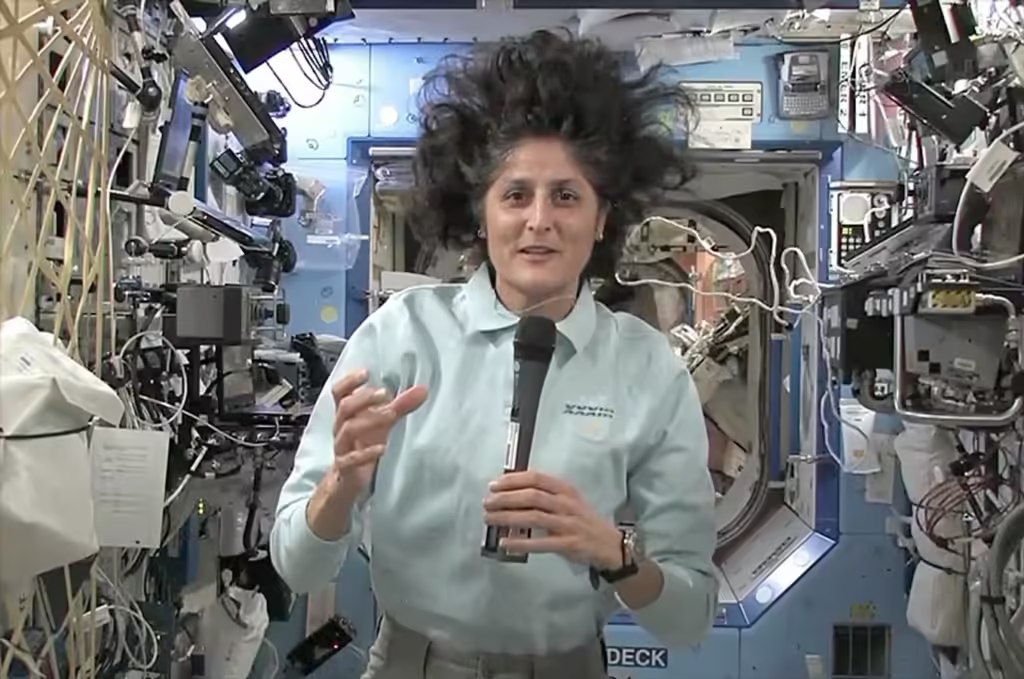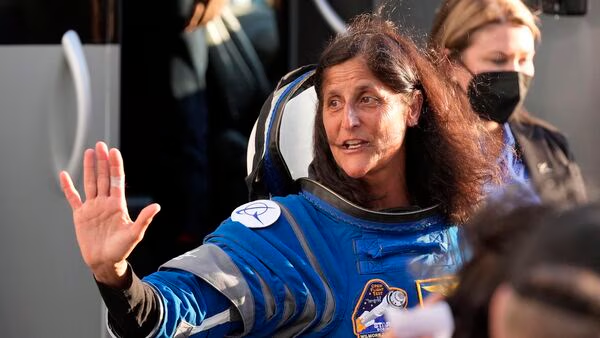Key Contents
NASA astronaut Sunita Williams has recently garnered attention, not for her achievements in space but due to the significant health risks she now faces as a result of an extended stay on the International Space Station (ISS). The ongoing complications with Boeing’s Starliner spacecraft have unexpectedly prolonged her mission, raising concerns about the long-term effects on both Williams and her fellow astronauts. This article delves into the current situation, discussing the Starliner delays, the potential health risks associated with extended space missions and the measures being implemented to support the crew on the ISS.
Sunita Williams’ Extended Mission: The Boeing Starliner Setback
Originally slated for a brief mission, Sunita Williams and fellow astronaut Barry “Butch” Wilmore were expected to return to Earth in June 2024. However, due to significant technical challenges with Boeing’s Starliner spacecraft, their mission has been extended indefinitely, possibly until February 2025. This delay stems from safety concerns, particularly regarding the Starliner’s propulsion system, which has failed to meet NASA’s strict safety requirements.
NASA now faces a difficult decision, weighing the risks of leaving the astronauts in space for an extended period against the uncertainties surrounding the untested Starliner. As a backup plan, NASA is considering using SpaceX’s Crew Dragon to bring the astronauts home if the Starliner remains unsafe for re-entry.

Health Concerns: The Impact of Prolonged Space Stays
Extended space missions pose numerous health risks and the unplanned extension of Sunita Williams’ mission has amplified these concerns. Significant risks include bone density loss, muscle atrophy and exposure to cosmic radiation. The microgravity environment on the ISS exacerbates these issues, accelerating the deterioration of muscle and bone mass, which can lead to serious long-term health problems.
Additionally, the microgravity conditions can alter intracranial pressure, potentially impacting vision and cognitive functions. Given Williams’ extensive time in space throughout her career, these risks are even more pronounced during this extended mission.
Progress 89: A Lifeline for Stranded Astronauts
In the midst of these challenges, the arrival of the Progress 89 spacecraft has provided some much-needed relief. Launched by Roscosmos, this uncrewed cargo spacecraft delivered vital supplies to the ISS, including food, fuel and other essentials. These supplies are crucial for the crew’s safety and well-being, ensuring they have the resources necessary to continue their mission despite the delays in their return.
The Progress 89 spacecraft will remain docked at the ISS to assist with waste management and other logistical needs throughout the extended mission, offering continued support to the astronauts.
The Risk of Brain Damage: Sunita Williams’ Long-Term Health
One of the most concerning risks associated with prolonged space missions is the potential for brain damage due to space radiation exposure. Studies indicate that astronauts in space are exposed to radiation levels significantly higher than those on Earth, increasing the likelihood of developing neurological issues and even cancer later in life. For Sunita Williams, who is already enduring an extended mission, these risks are particularly alarming.
The possibility of cognitive impairment, along with the physical strain of prolonged spaceflight, highlights the need to minimize mission durations whenever possible. NASA’s decisions in the coming months will be critical in safeguarding the health of Williams and her fellow crew members.

The Broader Implications: NASA and Boeing’s Struggles
The issues faced by NASA and Boeing with the Starliner mission have broader implications for the future of space exploration. Initially viewed as a crucial step toward reducing dependence on Russian spacecraft for crewed missions, the Starliner program has encountered several setbacks, casting doubt on its reliability as a transport vehicle for astronauts.
These challenges underscore the complexities of space exploration, where even minor technical failures can have significant repercussions. As NASA continues to collaborate with commercial partners, the lessons learned from the Starliner mission will be pivotal in shaping future partnerships and ensuring the safety of astronauts on long-duration missions.
Sunita Williams’ extended mission on the ISS has brought to light the complexities and risks inherent in space exploration. As NASA and Boeing work to resolve the Starliner spacecraft issues, the health and safety of the astronauts remain paramount. The prolonged mission has drawn attention to the potential long-term effects of spaceflight on human health, raising critical questions about the future of manned space missions.
As the situation evolves, the focus will be on ensuring that Williams and her crew return safely to Earth with minimal health impacts. The outcome of this mission is likely to influence the direction of future space exploration efforts, particularly in the realm of commercial spaceflight collaborations.
For Latest News Update Click Here.
